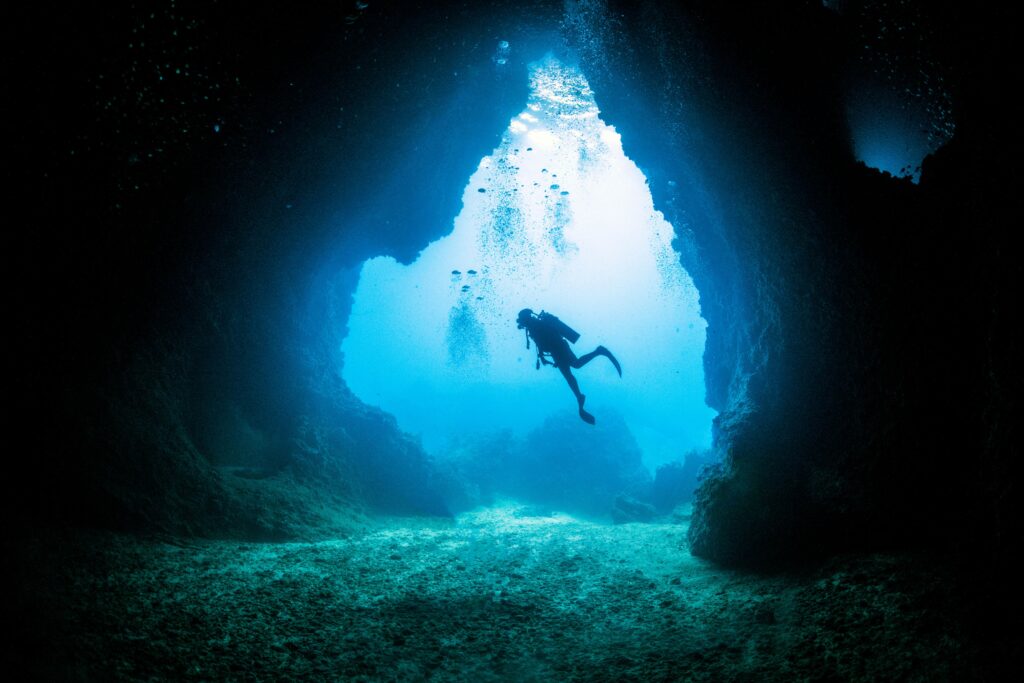Meet the Divers Trying to Figure Out How Deep Humans Can Go
Posted
Last Updated
Two hundred thirty meters into one of the deepest underwater caves on Earth, Richard “Harry” Harris knew that not far ahead of him was a 15-meter drop leading to a place no human being had seen before.
Getting there had taken two helicopters, three weeks of test dives, two tons of equipment, and hard work to overcome an unexpected number of technical problems. But in the moment, Harris was hypnotized by what was before him: the vast, black, gaping unknown.
Staring into it, he felt the familiar pull—maybe he could go just a little farther. Instead, he looked to his diving partner, Craig Challen, floating a few feet to his right. They had both been diving increasingly dangerous and unplumbed caves for years, making them two of only a handful of people with the skills to assist in the rescue of the Thai soccer team that got trapped in one in 2018. They knew extreme risk, and each other, well. Even through the goggles and the mouthpiece of the breathing apparatus, its four thick hoses curling around his face like mammoth tusks, Harris could see that Challen felt the same way. They both wanted very badly to push forward into the dark expanse.
Instead, on Harris’s cue, they turned back. They weren’t there to exceed 245 meters—a depth they’d reached three years earlier. Nor were they there to set a depth record—that would mean going past 308 meters. They were there to test what they saw as a possible key to unlocking depths beyond even 310 meters: breathing hydrogen.
read more at technologyreview.com

